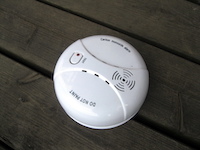
Water’s wonderful when it’s a liquid. Let it freeze, however, and it can wreak havoc on your home. Take measures to prevent frozen pipes and water lines that can leave you without the water you’ll need to stay clean, hydrated, and cooking throughout the season. Insulate walls that house your plumbing infrastructure and check with your local utility to get their advice on the best ways to keep the water running until spring brings a welcome thaw.
At the same time, work to ensure that the water that’s outside your home in the form of rain, snow, and ice stays there. Check your roof for leaks and your drainage to ensure that it’s not giving water a place to pool. That thick layer of snow on your roof might look great and make you feel all nice and cozy. The warmth of the roof below, however, could mean that there’s running water under it that is looking for a way out. That way out could be through your ceiling if you’re not careful and winter is a horrible time to find that out.
Know how you’re going to stay warm under normal circumstances and in an emergency or outage. It’s easy to forget that the simple act of trying to heat something generally involves burning something else. This introduces fire, smoke, carbon monoxide, and various electrical risks into our homes that most of us never give a second thought. Have a plan for keeping your regular home heating systems safe and operational but ensure that your backup plan (in the event of a power or gas failure) is also just as safe as it is effective.
Along the same lines, always remember that carbon monoxide is colorless and odorless. Most people who were killed by carbon monoxide had no idea that their lives were in jeopardy until it was too late. Symptoms of CO poisoning include headaches, dizziness, weakness, vomiting and stomach pain, chest pain, and an overall sense of confusion. Learn to recognize these symptoms in yourself and others but above all else, install a CO detector and change its batteries on the same schedule as your regular smoke detector.
Winter can be a magical time for many. It can also create emergency situations faster than our other seasons. Prepare for it and a winter outage can just mean time snuggled under extra blankets drinking tasty hot beverages. Fail to prepare, however, and you can be caught in a situation that leaves you cold, dehydrated, and hungry before you ever realize that you’re in danger.
